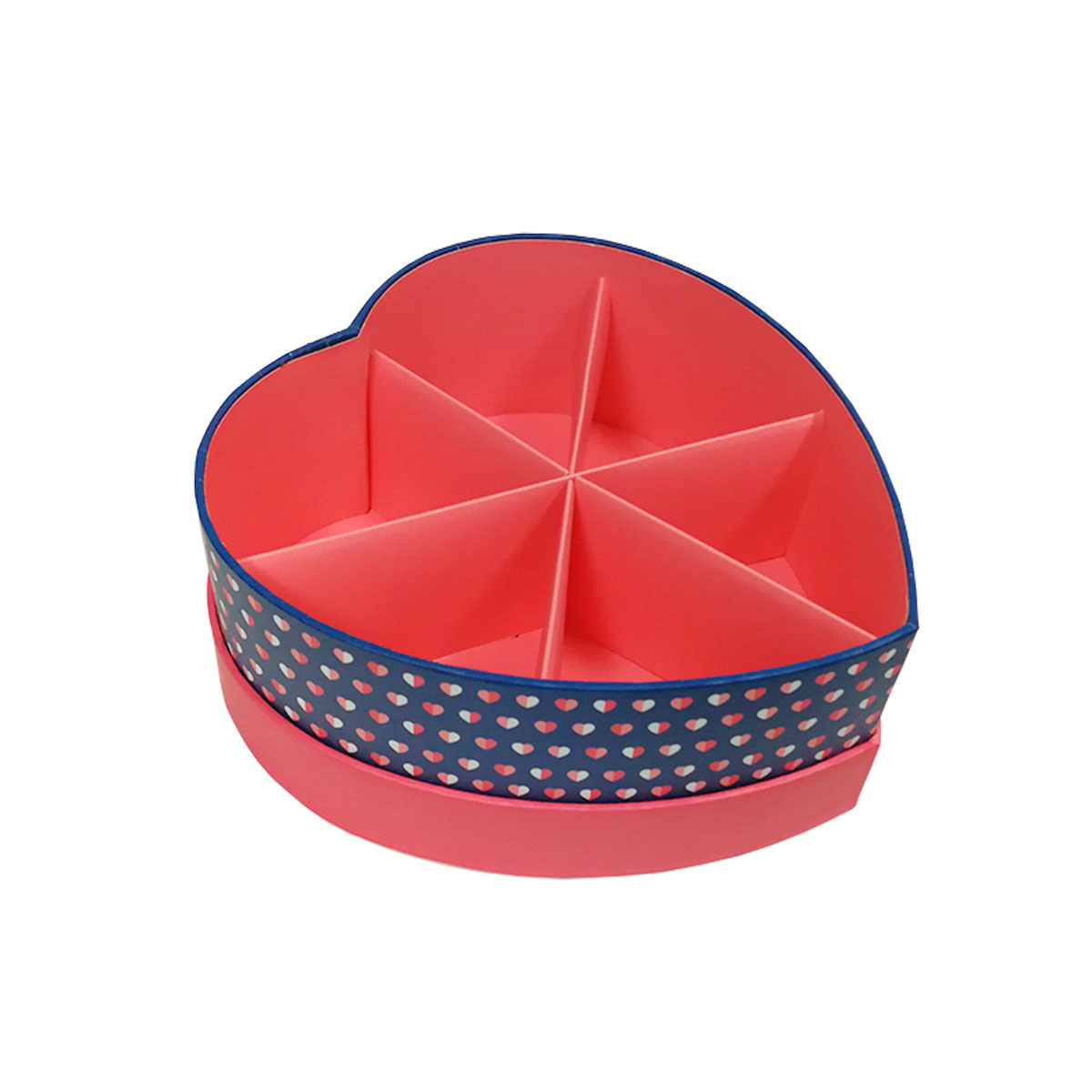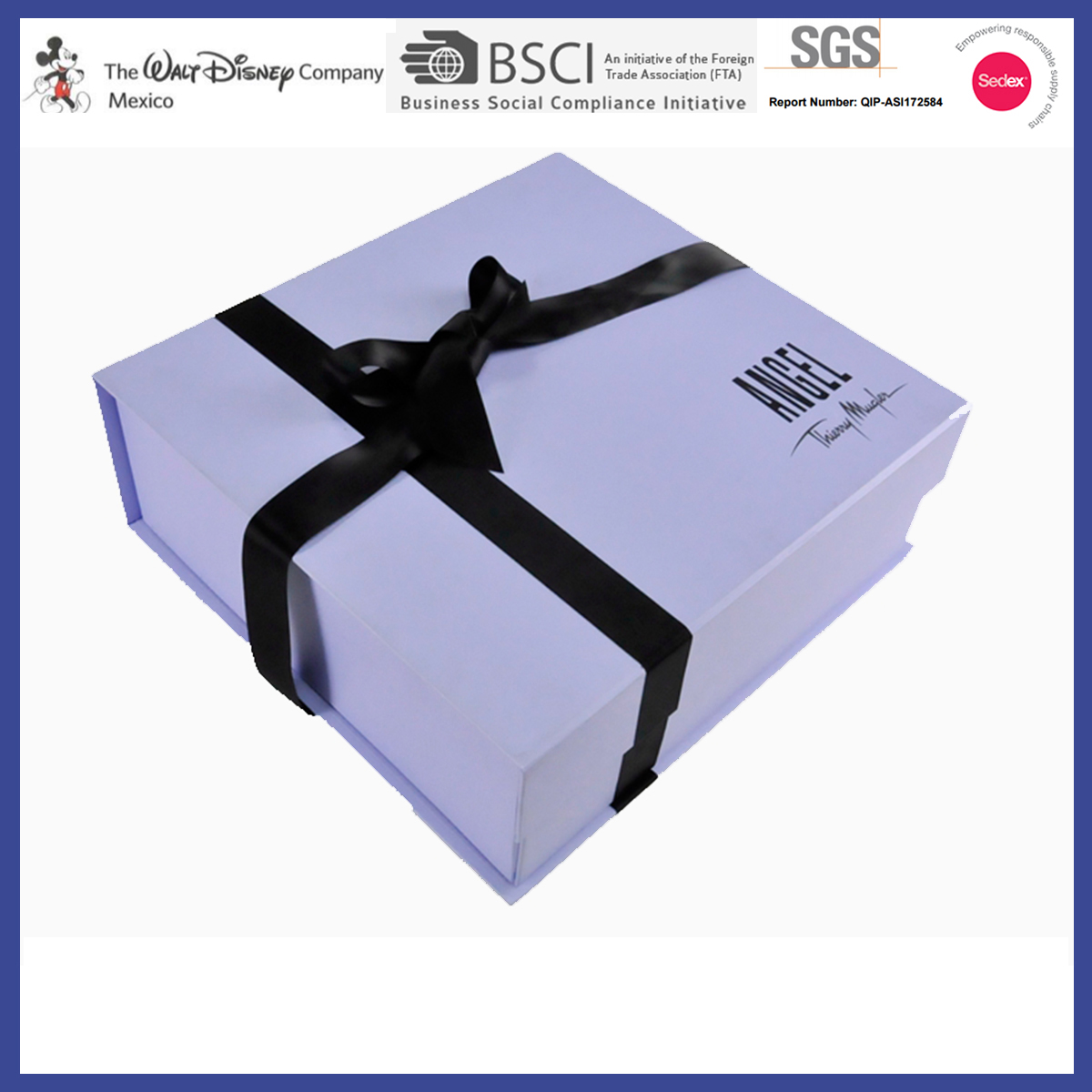English

Views: 0 Author: Site Editor Publish Time: 2025-06-20 Origin: Site

Valentine's Day is a globally celebrated occasion where gifts and acts of love are shared, and one of the most iconic gifts is the chocolate box. The tradition of giving chocolates, especially in beautifully packaged boxes, is now a staple of the holiday. The candy box is not just a treat; it symbolizes affection, thoughtfulness, and love. It is deeply embedded in the fabric of modern Valentine's Day culture.

What is the Valentine’s Day candy box?
The Valentine’s Day candy box is a specially designed container, usually heart-shaped, that holds chocolates or other confectioneries. The box is decorated with romantic symbols, such as Cupids, roses, and other symbols of love.
Its Significance as a Gift: Over the years, the candy box has evolved to become an important gesture to express love. It is a way to show affection and care, making it a perfect fit for Valentine’s Day, a celebration of love and romance.
Brief History of the Valentine’s Day Tradition
From its Historical Roots in the 14th Century: The origins of Valentine’s Day can be traced back to ancient Rome, but it became widely associated with romantic love through the work of Geoffrey Chaucer in the 14th century. Chaucer’s famous poem "Parlement of Foules" (1382) first linked St. Valentine with romantic love.
The Evolution of Valentine’s Day Gifts: Over the centuries, gifts given on Valentine’s Day ranged from poems to flowers and, eventually, to chocolates and candy boxes. By the Victorian era, the practice of exchanging Valentine’s Day gifts had become widespread.
The Origins of Chocolate Consumption
Early History of Chocolate in Mayan, Aztec, and Olmec Civilizations: Chocolate has a long history, dating back to the Mayans and Aztecs who made a bitter drink from cacao beans. They believed chocolate had divine properties and used it in rituals.
Chocolate’s Introduction to Europe: When chocolate was introduced to Europe in the 16th century by Spanish explorers, it was initially consumed as a hot beverage, sweetened with sugar.
Evolution of Chocolate from a Drink to a Candy: As time progressed, the method of preparing chocolate transformed. By the 19th century, advancements in chocolate-making techniques led to solid chocolate and candies, paving the way for the popular confectionery we enjoy today.
The Rise of Chocolate Houses and the Cadbury Family
The Rise of Chocolate Houses in Europe: By the 17th century, chocolate houses became popular in Europe, especially in Britain. These establishments sold hot chocolate to the wealthy, becoming a hub for socializing and intellectual exchange.
How the Cadbury Family Became Influential in the Chocolate Industry: The Cadbury family played a significant role in shaping the chocolate industry. Founded in 1824 by John Cadbury, the company initially sold tea, coffee, and drinking chocolate. By the 19th century, the family had become pioneers in the development of new chocolate products.
The Cadbury Brothers and Their Role
Richard and George Cadbury’s Takeover of the Family Business in 1861: Richard and George Cadbury took control of the business in 1861 and focused solely on chocolate, using innovative methods to create smoother, more refined chocolate products.
The Introduction of "Fancy Boxes" by Cadbury in 1861: In the same year, Cadbury introduced “Fancy Boxes,” which were beautifully designed containers filled with chocolate. This was the beginning of the company’s focus on creative packaging for its products.
Richard Cadbury’s Innovative Heart-Shaped Box in 1868: In 1868, Richard Cadbury, inspired by the romantic imagery of Valentine’s Day, designed the first heart-shaped chocolate box specifically for the occasion.
The Design and Marketing of the First Heart-Shaped Chocolate Box: The box was designed with intricate patterns, including Cupids and hearts, capturing the romantic essence of Valentine’s Day. This was the first time a candy box was marketed specifically for Valentine’s Day, turning it into a tradition.
Why Was the Heart-Shaped Box Revolutionary?
The Role of Sentimental Value in Design: The heart shape had long been associated with love and affection, and using this design for a candy box resonated emotionally with consumers, making the gift more meaningful.
Romantic Imagery Used in the Box Design: Cadbury’s use of romantic imagery like Cupids, roses, and love notes in the design was a groundbreaking marketing move that reinforced the emotional connection between the consumer and the gift.
Impact on the Commercialization of Valentine’s Day Chocolates: The heart-shaped box became the symbol of Valentine’s Day chocolates, influencing not only Cadbury’s future marketing but also setting a precedent for other chocolatiers to follow.
How Richard Cadbury’s Heart-Shaped Box Became Iconic
Popularity in Victorian England and Beyond: Richard’s heart-shaped box gained immense popularity in England and quickly became associated with Valentine’s Day. The tradition spread internationally, particularly in America, where chocolate consumption was rising rapidly.
The Influence on Other Chocolatiers and the Tradition’s Spread: The heart-shaped candy box became a symbol of love, influencing other chocolate companies to adopt similar designs and creating a lasting Valentine’s Day tradition.

Why Richard Cadbury Chose Not to Patent the Heart-Shaped Box: Despite the innovation, Cadbury chose not to patent the heart-shaped box, which allowed the concept to be widely adopted by other chocolatiers, further cementing its place in Valentine’s Day history.
Cadbury’s Marketing Genius
Use of Sentimental and Romantic Imagery on the Box: Richard Cadbury’s genius lay in his ability to tap into the emotional appeal of the holiday. The boxes were not just functional; they were pieces of art that carried sentimental value, making the chocolates inside even more special.
Design Details Such as Cupids, Roses, and Landscapes: The designs on the boxes were not only beautiful but were also emotionally evocative, featuring symbols of romance and love that matched the spirit of the holiday.
How These Design Choices Captured the Cultural Trends of the Time: During the Victorian era, there was a strong cultural emphasis on sentimentality and the visual expression of emotions, which Richard Cadbury expertly incorporated into his candy boxes.
Changes in Candy Box Designs and Varieties
Over time, the heart-shaped box evolved, and new designs emerged, including square and round boxes. Modern candy boxes may feature custom designs with luxurious materials and innovative packaging.
How Candy Boxes Evolved Through the 19th and 20th Centuries: Throughout the 20th century, candy boxes began to incorporate new materials such as plastic and metal, and their designs became more varied to cater to changing consumer tastes.
The Shift from Heart-Shaped Boxes to Other Designs: While heart-shaped boxes remain iconic, new trends such as personalized candy boxes, floral designs, and eco-friendly options have emerged in recent years.
The Role of Valentine's Day Candy Boxes in Modern Celebrations
Continued Significance of the Candy Box as a Symbol of Love: The heart-shaped candy box remains a powerful symbol of love, especially on Valentine’s Day, representing affection and romance.
How the Tradition Persists in Contemporary Times: Despite modern advancements, the tradition of giving chocolates in a decorative box continues to thrive as one of the most enduring Valentine’s Day customs.
Why People Still Love Gifting Chocolates in These Iconic Boxes: The combination of the sentiment behind the gift and the delicious chocolates inside makes candy boxes the go-to gift for Valentine’s Day.
Cadbury and Its Continued Legacy
Cadbury’s Ongoing Role in the Valentine’s Day Candy Box Tradition: Cadbury remains one of the most recognizable brands associated with Valentine’s Day candy boxes. Its heart-shaped boxes continue to be popular today, with a range of chocolate selections.
Popular Cadbury Heart-Shaped Boxes Today: Cadbury continues to innovate, offering new flavors and designs for its heart-shaped boxes, keeping the tradition fresh while maintaining the original spirit.
Recap of the Significance of the First Valentine’s Day Candy Box: Richard Cadbury’s invention of the heart-shaped candy box was revolutionary, creating a lasting Valentine’s Day tradition.
How the Cadbury Brothers Revolutionized Valentine’s Day Gifting: Their creative packaging and marketing strategies turned chocolate into a beloved Valentine’s Day gift.
The Lasting Impact of Their Innovation on Valentine’s Day Traditions: The heart-shaped candy box remains a symbol of love, affection, and sentimentality.
A Call to Embrace the Timeless Tradition of Gifting Chocolates in Heart-Shaped Boxes: As we continue to celebrate Valentine’s Day, let’s remember the tradition of gifting chocolates in heart-shaped boxes, a timeless expression of love.
A: Richard Cadbury invented the first heart-shaped Valentine's Day candy box in 1868.
A: The heart shape symbolizes love, making it a fitting design for a Valentine's Day gift.
A: The boxes featured sentimental designs and high-quality chocolates, often kept as mementos.
A: The heart-shaped box was sentimental, visually appealing, and linked to Victorian ornamentation.